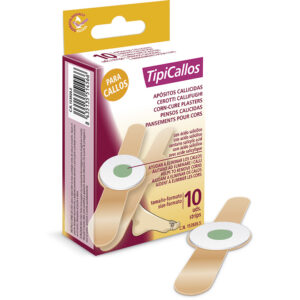Corns on the Feet

Calluses on the feet are nothing more than a warning of an excess of pressure on our feet. This hardening of the skin shows that there is an aggression in the area, since this is the way our body defends itself. Sometimes they even hurt just by rubbing them, so they must be eliminated and the cause must be found out.
This thickening of the skin is very common in the foot and usually occurs in the area of the sole of the foot, above the toes, on the back of the heels and between two or more toes, commonly referred to as “crow’s eye”. Corns usually appear on the face or top of the toes, while calluses usually appear on the soles of the feet or hands.
Causes of corns and calluses
Corns on the feet
Corns, formally known as helomas, are thickened areas of skin that your body creates to prevent further damage to underlying tissues, according to HealthCommunities.com.
They are usually circular in shape and have a clear or waxy center. Most people have hardened corns on their feet, which develop as a result of wearing improperly fitting shoes or as a result of deformities in the toe structures .
Some people also have soft corns, which are usually the result of bone malformations in the affected toes. If you expose the callus to constant friction, it can become painful or develop into a form of ulcer.

Calluses
Calluses, formally known as keratomas or thymomas, also result from the body’s attempts to prevent damage to underlying tissues, reports HealthCommunities.com. When they form on the feet, where they most often appear is at the base of the toes or heels.
Calluses may develop if you habitually walk barefoot. With the use of shoes, structural anomalies can develop in the toes that alter the way of walking, especially in shoes with high heels or narrow toes.
How to remove calluses from the feet?
The treatment consists of avoiding pressure on the callus and is carried out by means of silicone devices, patches, gel tubes, hydrogel dressings, toe separators… depending on the area where it occurs, and without forgetting to prevent it with protectors.
They can also be alleviated by various types of pads, gel insoles, gel bunion protectors, mini insoles or elastic support bands.
All these remedies are usually accompanied by periodic removal of corns by the podiatrist, or by keratolytic creams. In addition, we also recommend fighting them at home with our files and scrapers, keep your corns at bay!
What steps should we follow to eliminate them?
Consult your podiatrist to have your corns examined
A podiatrist can help you determine the cause of the corn so you can treat the problem directly. He or she will probably decide to remove the corn, but will warn you that it will return if you don’t address the problem that caused it.
Follow their recommendations for treating corns. These could include a change of footwear, the use of pads to protect the pads to protect the area from friction or pressure, orthotics to change the distribution of pressure on your feet, ororthotics to change the pressure distribution of your feet, or surgical correction of foot or toe problems.
All these remedies are usually accompanied by periodic removal of corns by the podiatrist, or by keratolytic creams. In addition, we also recommend fighting them at home with our files and scrapers, keep your corns at bay!
Use pads or dressings to relieve the pain of corns and calluses
Carefully follow the instructions on the package. In Herbifeet we have different models and sizes. Choose the one that best suits your needs.

Wear comfortable shoes
They should fit your feet well and have room for your toes. Also make sure the socks do not have seams that rub against your corns or places where they can develop.
Keep in mind that there are other things you can do to help prevent calluses.
These include:
- Wash your feet every day with soap, water and a brush.
- Use a pumice stone regularly.
- When your feet are dry, apply a foot cream to rehydrate them.
Change your socks daily. - Many people make the serious mistake of trying to pull or cut calluses to reduce that ugly appearance of dry, thick skin. However, this can be very painful and may result in infections infections that can make the problem more serious. It is for this reason that we must look for other alternatives to get rid of corns and be very patient in the removal process.
- Although there are several home remedies that help remove corns naturally, in the case of diabetics or other conditions that inhibit blood circulation, we recommend seeing a podiatrist, your feet will thank you.
As always, at Herbi Feet we recommend that if you have any doubts, you should consult your doctor or podiatrist.
Products that can help you
-

ERGONOMIC STEEL HARD SKIN FILE
Read more -

POLYMER GEL HEEL PROTECTOR
Read more -

RASPACALLOS
Read more -

SELF-ADHESIVE GEL PATCHES FOR CALLUSES
Read more -

SHEET OF FELT WITH ADHESIVE
Read more -

SMALL OVAL CALLUS PATCHES
Read more -

SMALL OVAL FOAM CALLUS DRESSINGS
Read more -

SMALL ROUND FOAM CALLUS DRESSINGS
Read more -

STRIP-GEL – SELF-ADHESIVE STRIPS
Read more -

TIPICALLUS PATCHES
Read more